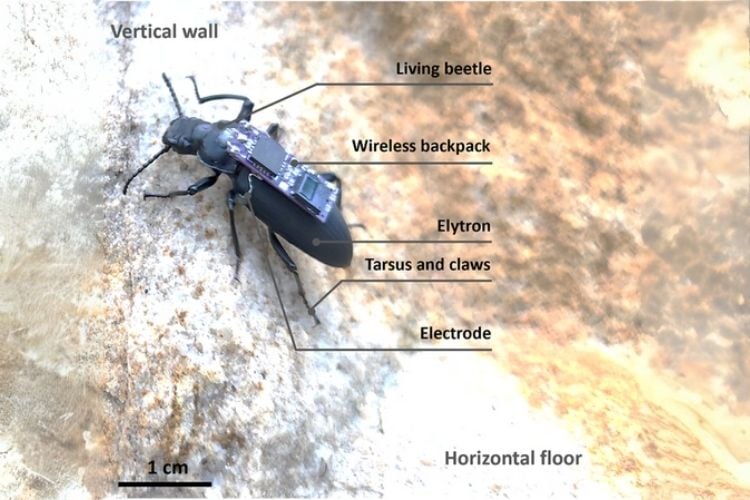
Researchers, with support from The University of Queensland and other institutions, developed Zoborg, a living darkling beetle that was turned into a cyborg using an electronic wireless backpack mounted on its body. The backpack is tiny (15.8 mm x 5.8 mm, weighing 160 mg) and includes an ATtiny85V microcontroller and an infrared receiver. Electrodes are implanted in the elytra (hard covers on a beetle’s back that protect its wings) and pronotum (top part of the beetle’s thorax, just behind its head) of the beetle to send electric pulses, and this stimulation allows the control of its movement.
Zoborg is designed to climb walls and cross obstacles, both of which are crucial for navigating complex and intricate environments like rubble in disaster zones if it were to be deployed for search and rescue missions. In a fraction of a second, Zoborg can cross low-profile steps (5 mm and 8 mm high) with success rates of 94.4% and 92.3%, respectively. Its antennae let it sense the obstacle’s height, and elytra stimulation is used to push it over. It uses an on-demand climbing protocol to move from flat surfaces to vertical walls. This is done in three steps: approach the wall, align its body with the wall, and transition onto the wall.
Zoborg takes advantage of the beetle’s natural abilities, like flexible footpads, sharp claws, and free antennae, and brings low-power electronics into the equation, making it agile, adaptable, and cheap. Experiments used a foam arena with walls and steps. Two cameras took care of recording movement, and software tracked the Zoborg’s position. The beetle was mostly tested tethered, but untethered operation was also demonstrated. The future possibilities include onboard sensors like cameras or IMUs for automatic control, making the cyborg an ideal candidate to fetch intel in real-world search and rescue operations.

